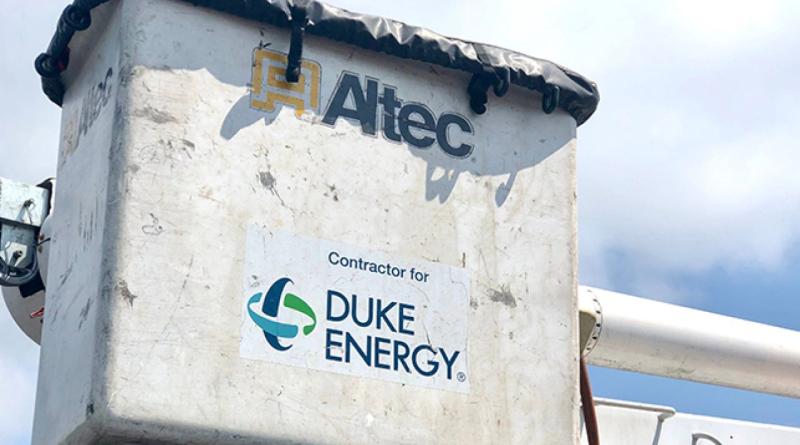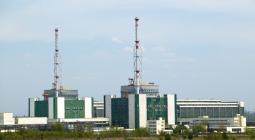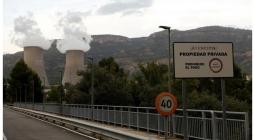Latest nuclear power boondoggle barrels toward North Carolina

State lawmakers poised to help Duke Energy waste hundreds of millions on non-existent small modular reactors
Lawmakers in North Carolina may soon make the misguided step of designating nuclear power “clean energy,” a change that would encourage Duke Energy’s foolhardy plan to throw away millions or even billions of dollars on developing unproven small nuclear reactors.
Legislation to make the change is pending in the North Carolina General Assembly, and the bill would give Duke the impetus to go all in on nuclear power. It would prioritize the dangerous and expensive electricity source while ignoring cleaner, safer and renewable choices like solar and wind. And the state has already approved Duke’s plans to stymie residential rooftop solar.
The legislation, Senate Bill 678, would significantly revise the state’s laws governing the way utilities like Duke operate. It nixes the term “renewable energy source” in those laws, replacing it with “clean energy source” and explicitly assigning nuclear power to that category.
That will embolden Duke as it pursues its energy plan, filed with state regulators in August, to attain a target of 12.5 percent of its electricity generation from nuclear power. The company is the main electric utility operating in North Carolina.
To reach its target, Duke could allocate hundreds of millions to develop small modular reactors, or SMRs, to replace coal-fired power generation. But SMR technology is unproven and an unwise investment, compared to solar and wind.
Duke CEO Lynn Good disclosed the company’s interest in SMRs in February 2022, discussing negotiations with Oregon-based NuScale Power, which is attempting to launch an SMR.
Duke claims it will begin building its first SMR as early as 2030 and get it operating by the end of 2034 – a wildly ambitious plan destined for cost overruns and failure.
The nuclear power industry is a notorious money pit, wasting billions of private and taxpayer dollars to research and develop SMR technology that never gets off the ground. As with larger nuclear plants, attempts to deploy small modular nuclear units in the U.S. and globally have resulted in massive costs far beyond original projections.
Duke can then pass its hundreds of millions in wasted SMR development on to its captive ratepayers in the form of higher monthly electricity bills.
Like many monopoly electric utilities guaranteed to profit under state regulations, Duke is infamous for squandering money on fanciful infrastructure misadventures.
A tally by EWG of Duke’s botched or aborted projects since 2013 found the company has wasted more than $11 billion, including billions on three failed nuclear plants. The utility sought and received approval from North Carolina regulators to pass the costs of those financial disasters along to ratepayers by hiking their monthly bills.
Unproven, unlikely technology
There is not a single SMR operating today in the U.S.
Despite a more than decade-long effort to commercialize NuScale’s SMR units, beginning in the early 2010s, costs continue to mount. A planned pilot located in the Mountain West has been delayed to at least the end of the decade.
Proponents of SMRs claim the reactors will be far less expensive and much safer to manufacture and operate than larger and older nuclear power plants.
Those rosy predictions are unlikely to come true, as the misfortune of existing SMR projects shows. They have cost billions more than original estimates and still have not come close to being operational in the U.S.
Collaborating with the Utah Associated Municipal Power System, NuScale plans to build an SMR at a Department of Energy site in Idaho. In 2015, the company asserted the entire capital cost for construction would be $3 billion. Since then, the projected construction costs of the NuScale project have grown even higher, to an eye-popping $9.3 billion, as of January 2023.
A study by the Institute for Energy Economics and Financial Analysis, or IEEFA, released in February 2022 panned NuScale’s blueprint. IEEFA argued the final price tag will be far higher than the company estimates. It will leave the communities that plan to draw electricity from the SMR on the hook for cost overruns that could run into the billions of dollars.
“Too late, too expensive, too risky and too uncertain. That, in a nutshell, describes NuScale’s planned small modular reactor (SMR) project, which has been in development since 2001 and will not begin commercial operations before 2029, if ever,” IEEFA said.
The IEEFA study also pointed out that the pursuit of SMRs could hinder the development of cleaner, safer and more cost-effective alternatives, such as solar and wind power.
Problems with NuScale
A recent EWG-commissioned analysis by two nuclear experts with decades of experience notes significant NuScale cost and safety drawbacks, which have been raised by Nuclear Regulatory Commission technical staff.
Arjun Makhijani, Ph.D., president of the Institute for Energy and Environmental Research, and M.V. Ramana, Ph.D., a professor at the School of Public Policy and Global Affairs, University of British Columbia scrutinized the November 15, 2022, pre-application readiness assessment report the NRC issued to NuScale. It details many concerns about the project’s safety, most notably issues with the design and location of the steam generator.
NuScale’s “road forward is unclear; it is likely to be delayed even more than it already has because of questions about the design’s safety. The saga of NuScale is one more signal that an SMR boom is going to be a long time coming, if ever,” wrote Makhijani and Ramana.
Large-scale nuclear projects have repeatedly experienced massive cost overruns, including the disastrous Vogtle nuclear plant in Georgia. It first began construction in 2009 with an initial cost estimate of $14 billion, which has now ballooned to more than $30 billion, and it only came online in July.
The same situation applies to NuScale’s SMR project, which has seen costs pile up higher year after year during the design phase.
In their analysis, Makhijani and Ramana emphasized the urgency of addressing climate change by promoting cleaner power sources. They argued that SMRs, with their extraordinarily long development timelines and uncertain outcomes, will have little effect on mitigating the worst impacts of the climate crisis in the next decade.
The Intergovernmental Panel on Climate Change and other international bodies have also stressed the need for drastic emissions reductions in the next few years to prevent irreversible damage from climate change. And relying on unproven SMRs won’t help.
North Carolina lawmakers are in the final stages of adopting their half-baked proposal to boost nuclear power as a clean energy source.
Duke’s potential investment in SMRs underscores the importance of thoroughly vetting the economic, environmental and safety implications of S.B. 678. In its current form, the legislation would allow Duke to waste hundreds of millions, even billions of dollars, on ill-conceived and untested nuclear technology in the state.





